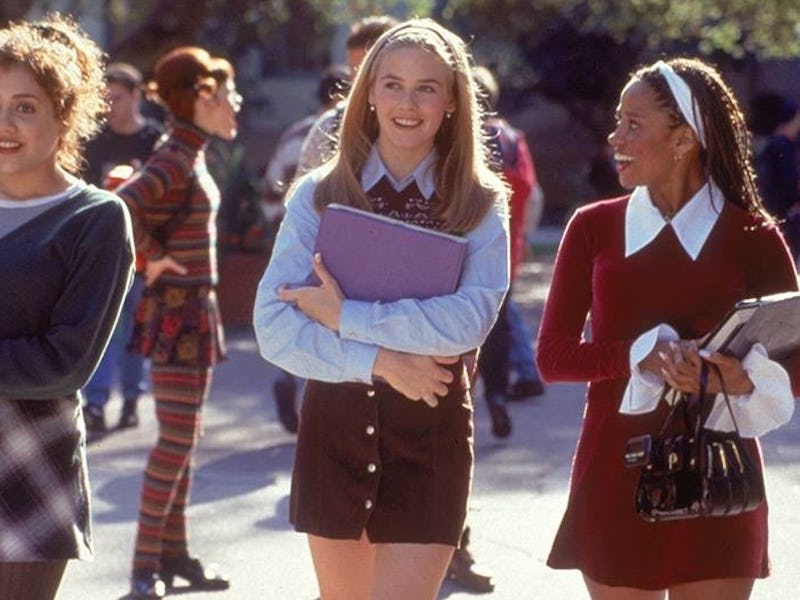20 Years After 'Clueless,' Teen Movies Turn to the Darkside
In 1995, Clueless dealt with wardrobe malfunctions. In 2015, teenagers deal almost exclusively with death. Hooray for progress!

Twenty years ago this week, Clueless slammed into the number two box office spot snagging $11 million on its opening weekend. Amy Heckerling’s teen comedy made $55 million throughout the course of its domestic run; a low-ball figure that appears pitiful in comparison to today’s considered success. Looking back on it, from within a climate so densely packed with franchise fodder, it’s astonishing to imagine a movie cleaning up $77 million worldwide without a built-in fanbase or social media marketing. Its leading lady, Alicia Silverstone, who briefly flirted with fame in 1993’s The Crush, wasn’t yet a true star.
It didn’t really need any of those things.
Clueless possesses something far more coveted in the movie industry: legacy. Popular culture was - and still is - impacted by the tale of a heroine looking past the advantages of her wealthy upbringing. Some might say it’s the catchphrases, those one-liners that still resonate today, or the now-incessant pandering to nostalgia that cemented it into the cultural bedrock. It’s, of course, both of those factors that have contributed to the film’s careful construction of a new teen dynamic.
The ditzy surface of Silverstone’s pseudo-airhead Cher Horowitz masks a much more insightful teen than her fashionista persona permits. She and her best friend Di both betray and adhere to the ‘90s Valley Girl stereotype, demonstrating Heckerling’s desire to acknowledge and advance the restrictions of the flagging teen genre.
At a time when recent onscreen teenagers were sparking up (Dazed and Confused), or seeking sense through suicide (Heathers and Pump up the Volume), Clueless took a less grim approach to being young. Life’s answers aren’t realised in an intoxicated fugue state - quite the opposite, in fact. The only way to uncover the reality of life is to heed the advice of Glinda the Good Witch: Look inside yourself, and you’ll realize you had the power all along. For the genuine emotional depth required to comprehend that truth, it has become a staggeringly shallow plot device that Heckerling avoids. Instead, she uses spot-on comedy to stress the development of the film’s likeable lead.
Cher nabs a ton of the giggles but the film’s biggest laughs are given to characters who aren’t teenagers. Cher’s father, played to a deadpan fault by Dan Hedaya, steals some of the best one-liners.
Crafting a great piece of cinema isn’t an exact science, yet the film lives up to its aspirations. Indeed, breezy comedy and ironclad plotting make for strange bedfellows. But, in addition to Cher and her father, the rest of the core characters — ranging from high schoolers to lawyers — are also driven by the humor of their actions. In short: the film’s individual elements knot together into a plot that remains relevant. All of its messages still apply.
Understandably, Hollywood’s inclination to duplicate success saw its strongest elements repackaged, rewritten, and resold to that same audience: Verbose, self-aware teens (Mean Girls); the modernisation of a classic novel (10 Things I Hate About You); teachers made human (Easy A); the ugly duckling-turned-knockout (She’s All That) — Clueless’ echoes can be felt across the last 20 years of adolescents struggling to make sense of the world in full technicolor glory. And that’s just a handful of the bigger hits to emerge. Countless shoddy knock-offs captured hints of Clueless’ brilliance, but with the exception of Mean Girls, none have truly been embedded in our shared cultural conversation. Probably because everything just got a helluva lot more dark.
In 2015, teen cinema is a somewhat drearier proposition. The flighty, carefree story and sunny characters have been swapped out for dark, moody teens whose struggles are no longer wardrobe crises but existential ones. Like Clueless, this recent wave of teen movies turn to literature for inspiration. Instead of the socialite quandaries of Austen’s era, contemporary young adult literature is populated with post-apocalyptic, hopeless, disease-ridden youngsters. Can their alcoholic boyfriend be redeemed? Would they be willing to kill a contemporary in order to survive? Will they outlive cancer?
In the ‘80s and ‘90s this desperation was paired with black comedy to make light of our human shortcomings. Apparently, no-one finds these things funny anymore. If Clueless made teenage angst manageable, albeit through a silver-spoon perspective, films like The Hunger Games and The Fault In Our Stars make it utterly impossible. The takeaway - “you’re going to die before you reach 20, so throw caution to the wind” - means nothing is owned. Responsibility is shouldered by someone (a drunken lover) or something else (The Capitol, God). The result? Teenagers embrace nostalgia before puberty has run its full course.
Let’s not forget: the movie business is cyclical. She’s All That and The Craft aren’t yet 20 and both are currently being remade. And while the Clueless remake has - thankfully - been steered to the stage, onscreen teens could still use a touch of its sunny optimism.